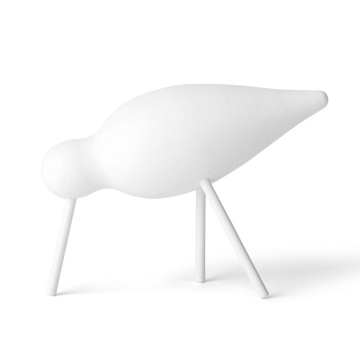Exploring Strasbourg: A Journey Through Modern Architectural Beauty
The Historical Context of Strasbourg’s Architecture
Strasbourg, located at the crossroads of France and Germany, possesses a rich architectural heritage shaped by its tumultuous history. Over the centuries, its strategic location has made the city a focal point for cultural exchange, political upheaval, and artistic innovation. This melding of influences is particularly evident in Strasbourg's architectural landscape, reflecting both its local heritage and the diverse styles introduced by various ruling powers.
The city’s architecture began to take form during the Roman Empire when it was known as Argentoratum. The remnants of Roman buildings and infrastructure, such as the ancient roads and fortifications, illustrate the early foundations of urban design in the area. Following the fall of the Roman Empire, the city's importance grew, especially during the Middle Ages, leading to the construction of iconic structures like the Strasbourg Cathedral. This Gothic masterpiece showcases intricate details and innovative techniques, emblematic of the period's architectural advancements.
Throughout the 17th and 18th centuries, Strasbourg underwent significant transformations as it became embroiled in the rivalries between France and Germany. The influence of the French Baroque style, permeated with Germanic features, resulted in a unique blend that defines much of the city’s historic architecture. The annexation of Strasbourg by Germany in the 19th century further introduced elements of the German Renaissance style, enriching the existing architectural diversity. This interplay of styles laid the groundwork for the modern architectural innovations seen today, including contemporary buildings that respectfully integrate with the historical context.
As modernity unfolded, Strasbourg embraced new architectural trends while ensuring the preservation of its historical essence. The city serves as a living archive of architectural evolution, where past influences harmonize with contemporary aspirations, exemplifying the dynamic relationship between history and modern design.
Highlights of Modern Architectural Landmarks
Strasbourg is home to several remarkable architectural feats that embody the principles of modern design. Among the most iconic modern structures is the European Parliament, a symbol of European unity and democracy. Designed by the architecture firm Architecture Studio, the building features a glass façade that reflects transparency and openness, key values in the political landscape. The use of sustainable materials not only enhances its aesthetic appeal but also aligns with contemporary environmental considerations.
Another significant landmark is the Musée d'Art Moderne et Contemporain, which was designed by architect Bertrand Schmidt and completed in 1998. This museum, with its striking design characterized by a combination of concrete and glass, serves as a canvas for displaying both modern and contemporary art. The building's unique layout allows for an interplay of natural light and space that enriches the visitor experience, making it a quintessential representation of modern architecture's ethos.
Furthermore, innovative residential complexes like the "Cité de l’Ill," designed by the firm of Sanaa, showcase a refreshing approach to urban living. This residential project integrates the natural environment with contemporary housing solutions. The use of lightweight materials and open, adaptable spaces reflects the modernist principles of flexibility and simplicity. Such designs not only provide functional living spaces but also promote community engagement and sustainability.
In each of these examples, the architects have embraced principles such as sustainability, transparency, and community interaction, which are pivotal in modern architecture. By integrating these elements into their designs, Strasbourg's landmarks stand as testament to the city’s commitment to progressive architectural practices. Visitors to the city will find that these structures not only serve a practical purpose but also tell a compelling story about the evolution of architectural thought in the modern era. Each landmark highlights a unique narrative, inviting exploration of both the physical space and the overarching vision behind their creation.
The Role of Sustainability in Strasbourg’s Architecture
In recent years, sustainability has emerged as a pivotal consideration in architectural practices across Strasbourg. This French city is making commendable strides in integrating eco-friendly materials, energy-efficient systems, and green spaces into its modern constructions. Such initiatives not only enhance the aesthetic appeal of buildings but also address the pressing need for sustainable urban development.
One of the notable examples can be found in the "Cité de l'Image," a complex designed with an emphasis on incorporating renewable energy sources and sustainable building materials. This structure utilizes solar panels and rainwater harvesting systems, showcasing how modern architecture can align with environmental responsibilities. Additionally, the use of locally-sourced materials reduces the carbon footprint linked to construction while supporting the local economy.
Moreover, many new developments in Strasbourg emphasize the creation of green spaces. The “ZAC de l’Escarpe,” for instance, integrates urban gardens and landscaped parks, promoting biodiversity and offering residents serene, natural environments amidst urban living. These green areas not only improve air quality but also foster community engagement and well-being, reflecting the city’s commitment to sustainability in its architectural vision.
The local government actively encourages community involvement in sustainable practices by organizing workshops and forums that educate citizens about eco-friendly architecture and urban planning. As public interest in sustainability grows, there is an increasing recognition of the role individuals can play in shaping their urban environments. The positive reception of these initiatives demonstrates a collective desire for a greener, more resilient Strasbourg.
Strasbourg's unique approach to sustainable architecture illustrates a harmonious blend of modern design and ecological responsibility. As the city continues to evolve, these practices are likely to inspire other urban areas to prioritize sustainability in their architectural frameworks, contributing to a more sustainable future across the globe.
Experiencing Strasbourg: Tips for Architectural Tours
Strasbourg, renowned for its unique blend of historical and modern architecture, offers various opportunities for those keen on exploring its architectural marvels. To enhance your experience, it is advisable to consider guided tours specifically designed to highlight the city's modern architectural gems. Several local companies provide knowledgeable guides who can share insights into the fascinating design concepts and stories behind each structure.
For a more personal touch, self-guided walking tours can be an excellent alternative. There are numerous suggested routes available online, which often include must-see buildings such as the European Parliament and the iconic Musée d'Art Moderne et Contemporain. Exploring these routes allows visitors to set their own pace and delve deeper into areas of particular interest. Downloadable maps or mobile applications dedicated to architectural walks can also assist in navigating the city’s plethora of modern design.
Timing your visit is crucial for an optimal experience. Early morning or late afternoon tends to offer the best lighting conditions for photography, allowing visitors to capture the striking details of the modern architecture. To obtain more information about the buildings, consider visiting local tourist information centers, which often provide brochures and expert advice. Engaging with local publications or dedicated websites can also enrich your understanding of Strasbourg's architectural narrative.
Moreover, when capturing photographs of the breathtaking structures, pay attention to composition and lighting. Utilizing angles that reflect the buildings' unique architectural features can enhance your images significantly. Bringing along a tripod can be beneficial, especially in low-light conditions. By following these tips, visitors can deeply appreciate and meaningfully engage with the architectural beauty that Strasbourg has to offer, making their journey truly memorable.





